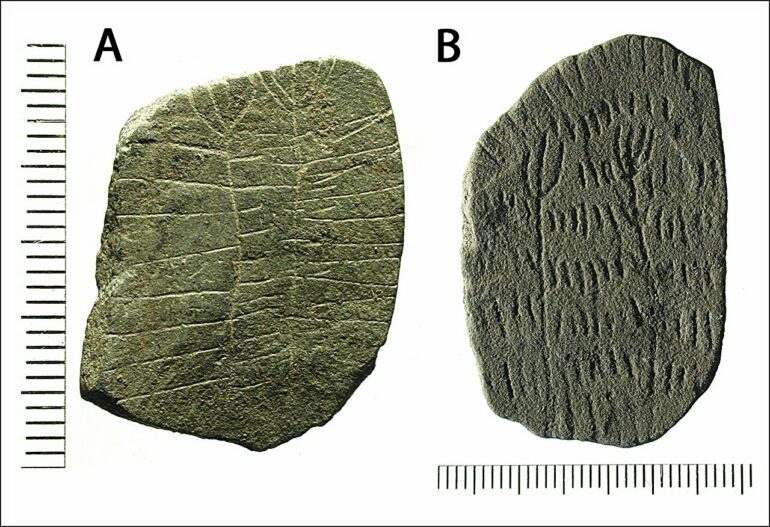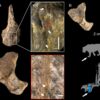About 4,900 years ago, a Neolithic people on the Danish island Bornholm sacrificed hundreds of stones engraved with sun and field motifs. Archaeologists and climate scientists from the University of Copenhagen can now show that these ritual sacrifices coincided with a large volcanic eruption that made the sun disappear throughout Northern Europe.
Throughout history, volcanic eruptions have had serious consequences for human societies, including cold weather, lack of sun, and low crop yields. In 43 BC, when a volcano in Alaska spewed large quantities of sulfur into the stratosphere, harvests failed the following years in the countries around the Mediterranean, causing famine and disease. This is well-documented in written sources from ancient Greece and Rome.
We do not have written sources from the Neolithic, but climate scientists from the Niels Bohr Institute at the University of Copenhagen analyzed ice core drillings and can now document that a similar volcanic eruption took place about 2,900 BC. An eruption that must have had equally devastating consequences for the Neolithic peoples who lived in Northern Europe at the time and who were deeply dependent on agriculture.
This new insight into a climate episode in the Neolithic period has led archaeologists from the University of Copenhagen, the National Museum of Denmark and the Museum of Bornholm to view their findings of so-called “sun stones” from the Neolithic Vasagård site on Bornholm in a new light. Their findings on the phenomenon are published in the journal Antiquity.
“We have known for a long time that the sun was the focal point for the early agricultural cultures we know of in Northern Europe. They farmed the land and depended on the sun to bring home the harvest. If the sun almost disappeared due to mist in the stratosphere for longer periods of time, it would have been extremely frightening for them,” says archaeologist Dr. Rune Iversen from the University of Copenhagen, who has participated in the excavations at the site led by the Museum of Bornholm and the National Museum.
“One type of find that is completely unique to Bornholm are the so-called sun stones, which are flat shale pieces with engraved patterns and sun motifs. They symbolized fertility and were probably sacrificed to ensure sun and growth. Sun stones were found in large quantities at the Vasagård West site, where residents deposited them in ditches forming part of a causewayed enclosure together with the remains of ritual feasts in the form of animal bones, broken clay vessels, and flint objects around 2,900 BC. The ditches were subsequently closed,” he adds.
Dr. Iversen and his colleagues believe that there is a very high probability that there is a connection between the volcanic eruption, the subsequent climate changes and the discovery of the ritual sun stone sacrifices.
“It is reasonable to believe that the Neolithic people on Bornholm wanted to protect themselves from further deterioration of the climate by sacrificing sun stones—or perhaps they wanted to show their gratitude that the sun had returned again.”
As if an acute climate deterioration around 2,900 BC was not enough, Northern European Neolithic cultures were also affected by other disasters. New DNA studies of human bones have shown that the plague was very widespread and fatal.
During the same period when the Neolithic people were affected by both climate change and disease, archaeologists can also document a shift in the traditions they had held on to for a long time. The so-called Funnel Beaker Culture, which had been dominant until about 5,000 years ago with its characteristic ceramics and passage graves, was gradually disappearing.
“At the causewayed enclosure we have excavated on Bornholm, we can also see that, after the sacrifice of the sun stones, the residents changed the structure of the site so that instead of sacrificial ditches, it was provided with extensive rows of palisades and circular cult houses,” Dr. Iversen concludes. “We do not know why, but it is reasonable to believe that the dramatic climatic changes they had been exposed to would have played a role in some way.”
More information:
Sun stones and the darkened sun: Neolithic miniature art from the island of Bornholm, Denmark. Antiquity. DOI: 10.15184/aqy.2024.217
Citation:
Volcanic eruptions linked to Neolithic ‘sun stone’ sacrifices in Denmark (2025, January 16)



